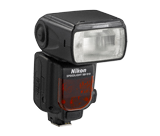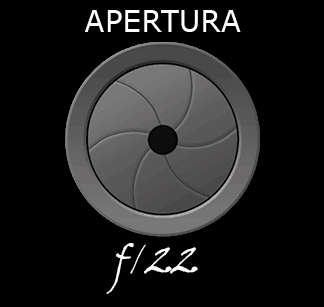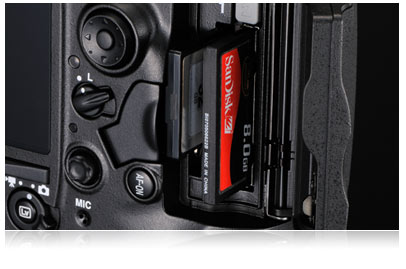En noviembre 30 de 2011 la compañía Nikon lanza al mercado su nuevo flash SB-910, sucesor de su exitoso producto SB-900. Se trata de un Flash i-TTL (TTL inteligente, o Through-the-lens Metering) de alta velocidad y diseñado más bien para los fotógrafos profesionales.
El flash SB-910 promete ser un flash versátil y de alta potencia. Aunque no presenta cambios significativos en el diseño comparado con su sucesor SB-900. Este continúa con la línea de diseño iniciada por el SB-700 y simplifica algo la interface de usuario de la parte posterior con respecto al SB-900. Mejoraron las teclas de función iluminándolas, presenta un botón de Menú dedicado con acceso rápido a la configuración personalizada y una mejora sutil en la interface de la pantalla gráfica LCD de usuario.
 El SB-910 cuenta con un nuevo y mejorado sistema de control de temperatura que protege la pantalla y electrónica del mismo controlando el tiempo de reciclaje del flash en caso de detectar sobrecarga de temperatura y así evitar apagar el mismo si no es necesario. Además utiliza de manera más eficiente el consumo de las baterías. Viene con filtros integrados para la iluminación fluorescente o tungsteno, cambiando automáticamente el balance de blancos de la cámara para que coincida con el filtro.
El SB-910 cuenta con un nuevo y mejorado sistema de control de temperatura que protege la pantalla y electrónica del mismo controlando el tiempo de reciclaje del flash en caso de detectar sobrecarga de temperatura y así evitar apagar el mismo si no es necesario. Además utiliza de manera más eficiente el consumo de las baterías. Viene con filtros integrados para la iluminación fluorescente o tungsteno, cambiando automáticamente el balance de blancos de la cámara para que coincida con el filtro.
También ofrece iluminación con calidad de estudio, y tiene mejoras en alcance de zoom ampliado de 17 a 200 mm y tres nuevos patrones de iluminación (standard, center-weighted and even) que permiten una mejor cobertura y control de esta.
El SB-910 apoya la operación del sistema de “Nikon’s peedlight advanced wireless TTL” . Este puede operar como “commander” inalámbrico controlando hasta tres (3) grupos de flash o como unida remoto comandada por otro SB-910, SB-700 o el SU-800. También puede ser accionado remotamente por las cámaras D-SLR con modo “commander”. Tiene un tiempo de reciclado de aproximadamente 2.5 segundos cuando es usado a máxima potencia y baterías Ni, tres (3) segundos con baterías Alcalinas AA.
Esta unidad estará disponible en el mercado para diciembre 2011 a un precio alrededor de los $549.00 USD
 Mi opinión sobre el flash SB-910
Mi opinión sobre el flash SB-910
Nikon describe esta unidad como una excelente alternativa. En mi opinión eso es cierto para aquel fotógrafo que trabaja la fotografía en estudio y que depende de una iluminación de alta calidad y potencia. Definitivamente es una alternativa a las pesadas y grandes unidades de iluminación fijas de estudio. Sin embargo para el tipo de fotografía que realizo y que realiza la mayoría de nosotros, las características nuevas de este flash no son suficientes para considerar cambiar mi SB-900 existente por un SB-910 nuevo. Lo cierto es que si el SB-900 sigue en el mercado bajará de precio y será atractivo para mi adquirir otro de ellos. ¿Qué opinas tu?.
Claro para aquel que vaya a comprar un primer flash y necesite iluminación de alta calidad este es una alternativa.
Especificaciones de los Flash Speedlight SB-910, el SB-900 y el SB-700
Aquí te incluyo las especificaciones (en ingles) del SB-910, el SB-900 y el SB-700 para que puedas comparar y hacer tu propia decisión.
 SB-910 AF Speedlight $549.95 * SB-910 AF Speedlight $549.95 * |
 SB-900 AF Speedlight $494.95 * |
 SB-700 AF Speedlight $329.95 * |
||
| Ratings | Be the first to write a review | |||
| Guide Number | 34 m/111.5 ft. (at ISO 100, 35mm zoom head position, in FX format, standard illumination pattern | 34 m/111.5 ft. (at ISO 100, 35mm zoom head position, in FX format, standard illumination pattern | 28 m/92 ft. (at ISO 100, 35mm zoom head position, in FX format, standard illumination pattern | |
| Lens Coverage | 8 to 11mm (DX-format, Automatic mode with built-in wide-angle panel deployed) 12 to 17mm (FX-format, Automatic mode with built-in wide-angle panel deployed) 12 to 200mm (DX-format, Automatic mode) 17 to 200mm (FX-format, Automatic mode) |
8 to 11mm (DX-format, Automatic mode with built-in wide-angle panel deployed) 12 to 17mm (FX-format, Automatic mode with built-in wide-angle panel deployed) 12 to 200mm (DX-format, Automatic mode) 17 to 200mm (FX-format, Automatic mode) |
14-120mm (DX-format) 24 to 120mm (FX-Format) |
|
| Bounce Function (Tilt) | Flash head tilts down to -7° or up to 90° with click-stops at -7°, 0°, 45°, 60°, 75°, 90°. | Flash head tilts down to -7° or up to 90° with click-stops at -7°, 0°, 45°, 60°, 75°, 90°. | Flash head tilts down to -7° or up to 90° with click-stops at -7°, 0°, 45°, 60°, 75°, 90°. | |
| Bounce Function (Rotate) | Flash head rotates horizontally 180° to the left and right with click-stops at 0°, 30°, 60°, 75°, 90°, 120°, 150°, 180° | Flash head rotates horizontally 180° to the left and right with click-stops at 0°, 30°, 60°, 75°, 90°, 120°, 150°, 180° | Flash head rotates horizontally 180° to the left and right with click-stops at 0°, 30°, 60°, 75°, 90°, 120°, 150°, 180° | |
| Dimensions | 3.1 x 5.7 x 4.4 in. (78.5 x 145 x 113mm) | 3.0 x 5.7 x 4.7 in. (78.0 x 146.0 x 118.5mm) (Approx.) | 2.8 × 5.0 × 4.1 in. (71.0 × 126.0 × 104.5mm) (Approx.) | |
| Weight (Approx. without batteries) | 14.8 oz. (420g) | 14.6 oz. (415g) | 12.7 oz. (360g) | |
| Additional Specs | ||||
| Commander Function | Yes | Yes | Yes | |
| Remote Function | Yes | Yes | Yes | |
| Electronic Construction | Automatic Insulated Gate Bipolar Transistor (IGBT) and series circuitry | Automatic Insulated Gate Bipolar Transistor (IGBT) and series circuitry | Automatic Insulated Gate Bipolar Transistor (IGBT) and series circuitry | |
| Flash Exposure Control | Distance-priority manual flash i-TTL Balanced Fill-Flash with CLS compatible cameras Manual Flash (with Nikon Creative Lighting System digital and 35mm SLR cameras) |
Distance-priority manual flash i-TTL Balanced Fill-Flash with CLS compatible cameras Manual Flash (with Nikon Creative Lighting System digital and 35mm SLR cameras) |
Distance-priority manual flash i-TTL Balanced Fill-Flash with CLS compatible cameras Manual Flash (with Nikon Creative Lighting System digital and 35mm SLR cameras) |
|
| Lens Coverage | 8 to 11mm (DX-format, Automatic mode with built-in wide-angle panel deployed) 12 to 17mm (FX-format, Automatic mode with built-in wide-angle panel deployed) 12 to 200mm (DX-format, Automatic mode) 17 to 200mm (FX-format, Automatic mode) |
8 to 11mm (DX-format, Automatic mode with built-in wide-angle panel deployed) 12 to 17mm (FX-format, Automatic mode with built-in wide-angle panel deployed) 12 to 200mm (DX-format, Automatic mode) 17 to 200mm (FX-format, Automatic mode) |
14-120mm (DX-format) 24 to 120mm (FX-Format) |
|
| Illumination pattern | The light distribution angle is automatically adjusted to the camera’s image area in both FX and DX formats Standard Even Center-weighted |
The light distribution angle is automatically adjusted to the camera’s image area in both FX and DX formats Standard Even Center-weighted |
The light distribution angle is automatically adjusted to the camera’s image area in both FX and DX formats Standard Even Center-weighted |
|
| Other Available Functions | Test Firing Monitor Pre-flashes AF-assist illumination for multi-point AF Modeling illuminator |
Test Firing Monitor Pre-flashes AF-assist illuminator Modeling illuminator |
Test Firing Monitor Pre-flashes AF-assist illuminator Modeling illuminator |
|
| Bounce Function (Tilt) | Flash head tilts down to -7° or up to 90° with click-stops at -7°, 0°, 45°, 60°, 75°, 90°. | Flash head tilts down to -7° or up to 90° with click-stops at -7°, 0°, 45°, 60°, 75°, 90°. | Flash head tilts down to -7° or up to 90° with click-stops at -7°, 0°, 45°, 60°, 75°, 90°. | |
| Bounce Function (Rotate) | Flash head rotates horizontally 180° to the left and right with click-stops at 0°, 30°, 60°, 75°, 90°, 120°, 150°, 180° | Flash head rotates horizontally 180° to the left and right with click-stops at 0°, 30°, 60°, 75°, 90°, 120°, 150°, 180° | Flash head rotates horizontally 180° to the left and right with click-stops at 0°, 30°, 60°, 75°, 90°, 120°, 150°, 180° | |
| Minimum Recycling Time | 2.3 sec. (approx.) with Ni-MH (2600 mAh) batteries 3.0 sec. (approx.) with Oxyride™ (1.5V) batteries 4.0 sec. (approx.) with Alkaline-manganese (1.5V) batteries 4.5 sec. (approx.) with Lithium (1.5V) batteries |
2.3 sec. (approx.) with Ni-MH (2600 mAh) batteries 3.0 sec. (approx.) with Oxyride™ (1.5V) batteries 4.0 sec. (approx.) with Alkaline-manganese (1.5V) batteries 4.5 sec. (approx.) with Lithium (1.5V) batteries |
2.5 sec. (approx.) with AA-size Alkaline (1.5V) batteries 2.5 sec. (approx.) with Evolta (1.5V) batteries 2.5 sec. (approx.) with NiMH (2600 mAh) batteries 2.5 sec. (approx.) with NiMH (eneloop) batteries 3.5 sec. (approx.) with Lithium (1.5V) batteries |
|
| Flash Duration | 1/880 sec. at M 1/1 (full) output 1/1100 sec. at M 1/2 output 1/2550 sec. at M 1/4 output 1/5000 sec. at M 1/8 output 1/10000 sec. at M 1/16 output 1/20000 sec. at M 1/32 output 1/35700 sec. at M 1/64 output 1/38500 sec. at M 1/128 output |
1/880 sec. at M 1/1 (full) output 1/1100 sec. at M 1/2 output 1/2550 sec. at M 1/4 output 1/5000 sec. at M 1/8 output 1/10000 sec. at M 1/16 output 1/20000 sec. at M 1/32 output 1/35700 sec. at M 1/64 output 1/38500 sec. at M 1/128 output |
1/1042 sec. at M1/1 (full) output 1/1136 sec. at M1/2 output 1/2857 sec. at M1/4 output 1/5714 sec. at M1/8 output 1/10000 sec. at M1/16 output 1/18182 sec. at M1/32 output 1/25000 sec. at M1/64 output 1/40000 sec. at M1/128 output |
|
| Required Power Source | Four 1.2V Ni-MH (AA-size) batteries Four 1.5V Alkaline-manganese (AA-size) batteries Four 1.5V Lithium (AA-size) batteries |
Four 1.2V Ni-MH (AA-size) batteries Four 1.5V Alkaline-manganese (AA-size) batteries Four 1.5V Lithium (AA-size) batteries |
Four 1.5 V alkaline AA-size batteries Four 1.5 V lithium AA-size batteries Four Rechargeable 1.2 V NiMH AA-size batteries |
|
| Optional Power Supply | SK-6 Power Bracket Unit, SD-9 High-Performance Battery Pack SD-8A High-Performance Battery Pack |
SK-6 Power Bracket Unit SD-8A High-Performance Battery Pack SD-9 High-Performance Battery Pack |
— | |
| Flash-ready Indicator | Rear and Front lights blink: Insufficient light for correct exposure (in i-TTL, Auto Aperture flash, Non-TTL Auto flash, or Distance-priority manual flash operations). Rear lights up and Front blinks: recycled and ready to fire. |
Rear and Front lights blink: Insufficient light for correct exposure (in i-TTL, Auto Aperture flash, Non-TTL Auto flash, or Distance-priority manual flash operations). Rear lights up and Front blinks: recycled and ready to fire. |
Blinks: insufficient flash output for correct exposure (in i-TTL or distance-priority manual flash mode) Lights up: recycled and ready to fire. |
|
| Ready Light | Front | Front Back |
Front Back |
|
| Flash Compensation | –3.0 EV to +3.0 EV in increments of 1/3 steps in i-TTL auto flash, Auto Aperture flash, Non-TTL auto flash and Distance-priority manual flash modes | –3.0 EV to +3.0 EV in increments of 1/3 steps in i-TTL auto flash, Auto Aperture flash, Non-TTL auto flash and Distance-priority manual flash modes | -3.0 EV to +3.0 EV in increments of 1/3 EV steps in i-TTL mode | |
| Minimum Number of Flashes / Recycling Time | 110/4.0 – 30 sec. (1.5V Alkaline-manganese) 165/2.3–30 sec. (Ni-MH (eneloop)) 190/2.3–30 sec. (2600mAh Ni-MH) 230/4.5–120 sec. (1.5V Lithium) |
110/4.0 – 30 sec. (1.5V Alkaline-manganese) 125/3.0 –30 sec. (1.5V Oxyride™) 165/2.3–30 sec. (Ni-MH (eneloop)) 190/2.3–30 sec. (2600mAh Ni-MH) 230/4.5–120 sec. (1.5V Lithium) |
160/2.5–30 sec. (1.5V AA Alkaline) 230/2.5–30 sec. (1.5V Evolta) 260/2.5–30 sec. (2600 mAh NiMH) 230/2.5–30 sec. (Ni-MH (eneloop)) 330/3.5–30 sec. (1.5V Lithium) |
|
| Wireless Flash Modes | Master Master (RPT) Off Remote SU-4 |
Master Master (RPT) Off Remote SU-4 |
Master Quick wireless Mode: A:B Off Remote SU-4 |
|
| Wireless Communication Channels | Four: 1, 2, 3 and 4 Channels | Four: 1, 2, 3 and 4 Channels | Four: 1, 2, 3 and 4 Channels | |
| Wireless Groups | Three: A, B and C | Three: A, B and C | Two: A, B | |
| Other Functions | Firmware update ISO sensitivity setting Key lock Recalling the underexposure value in the TTL auto flash mode Resetting the settings Improved Thermal Cut-out |
Firmware update ISO sensitivity setting Key lock Recalling the underexposure value in the TTL auto flash mode Resetting the settings Thermal cut-out |
Firmware update Thermal cut-out |
|
| Dimensions | 3.1 x 5.7 x 4.4 in. (78.5 x 145 x 113mm) | 3.0 x 5.7 x 4.7 in. (78.0 x 146.0 x 118.5mm) (Approx.) | 2.8 × 5.0 × 4.1 in. (71.0 × 126.0 × 104.5mm) (Approx.) | |
| Weight (Approx. without batteries) | 14.8 oz. (420g) | 14.6 oz. (415g) | 12.7 oz. (360g) | |
| Donde lo puedes comprar | Más información del SB-910 AF Speedlight en Amazon |
Más información del SB-900 AF Speedlight En Amazon |
Más Información del SB-700 AF SpeedlighT En Amazon |
|
| Más Información del Nikon SB-910 AF Speedlight i-TTL Shoe Mount Flash En BH Photo | Más información en BH Photo Nikon SB-900 AF Speedlight i-TTL Shoe Mount Flash | Más Información del Nikon SB-700 Speedlight Shoe Mount Flash En BH Photo | ||
| Más información de SB-700 en Amazon de España |
||||
Espero que este artículo te haya servido para al menos plantearte los datos y mi opinión sobre eta unidad de flash y así puedas tomar una sabia decisión al momento de seleccionar tu flash para tu cámara Nikon.
Me encantaría dejaras tu comentario aquí abajo y que compartas este articulo con tus amigos de FB haciendo clic sobre el botón de “Me gusta” y con tu círculo de amigos de Google+ haciendo clic en el botón de “+1”. ¡Sigue las flechas rojas!
Hasta un próximo artículo.

























Muy bueno e ilustrativo el comentario, busco mi primer flash para mi nikon D90. Por precios y características muy similares creo que el aconsejable es el SB-900, casi 60 dólares menos y tienen las mismas funciones, se observa la ligerísima variación en el tamaño en su parte externa. Gracias
me parece todo muy interesante y muy bien explicado..Gracias
Una excelente joya que facilita el trabajo al profesional. La verdad es que sale caro, pero merece la pena tenerlo!. Yo trabajo super a gusto y seguro con el.
A mi personalmente el sb 900 me da problemas de sobre calentamiento demasiado a menudo, no me queda muy claro si este me solucionaría tal problema.
Una gran joya para la tranquilidad del profesional. La verdad que por ahora sale muy caro, pero merece la pena…. trabajo muy a gusto con él!!